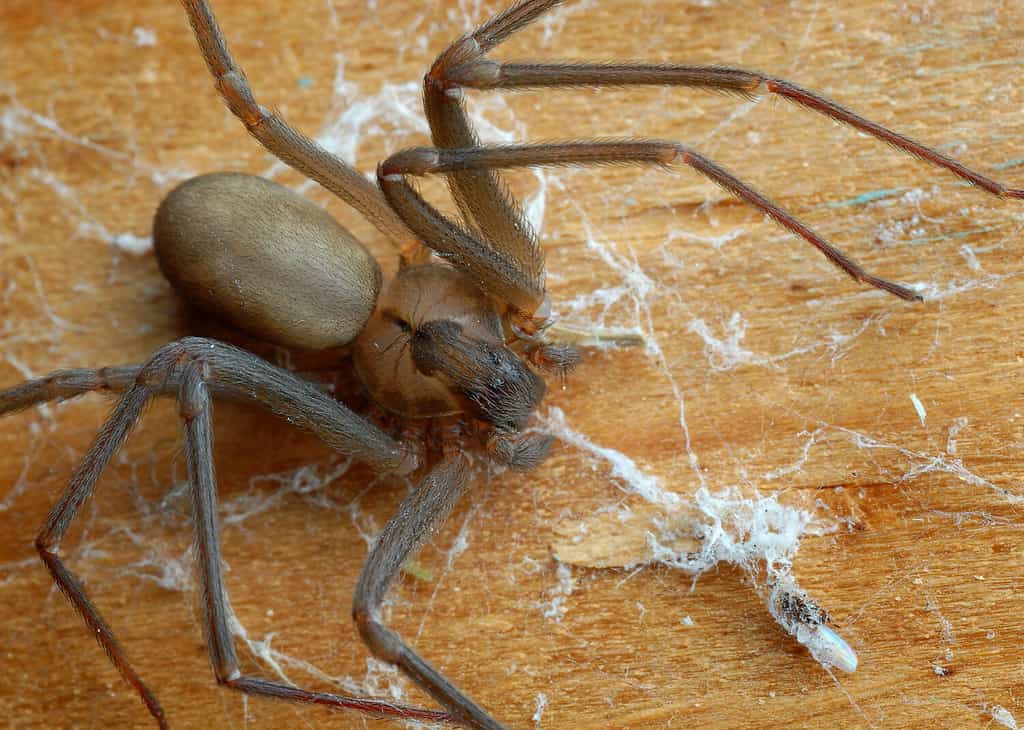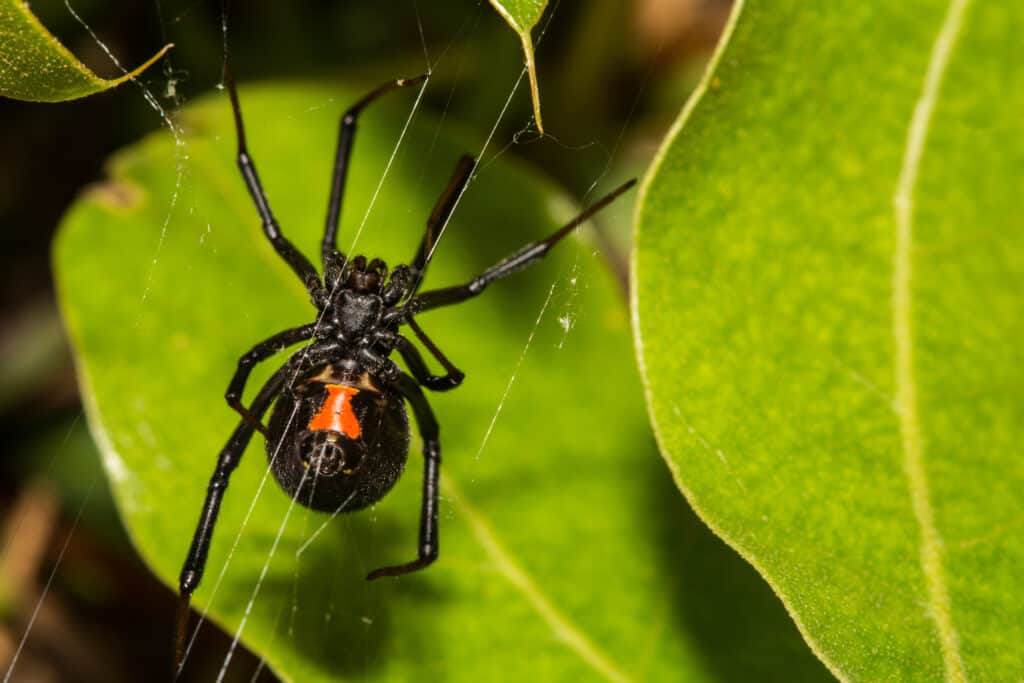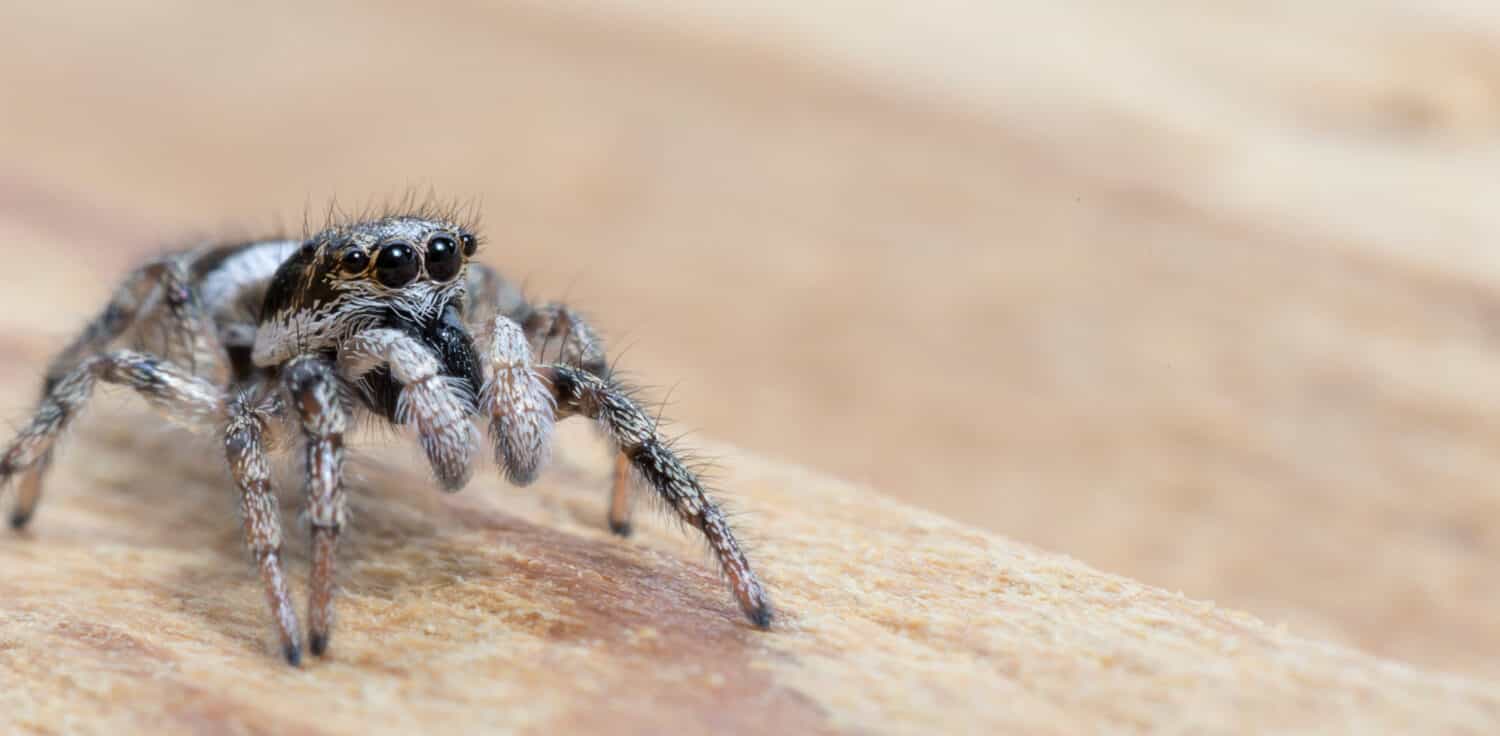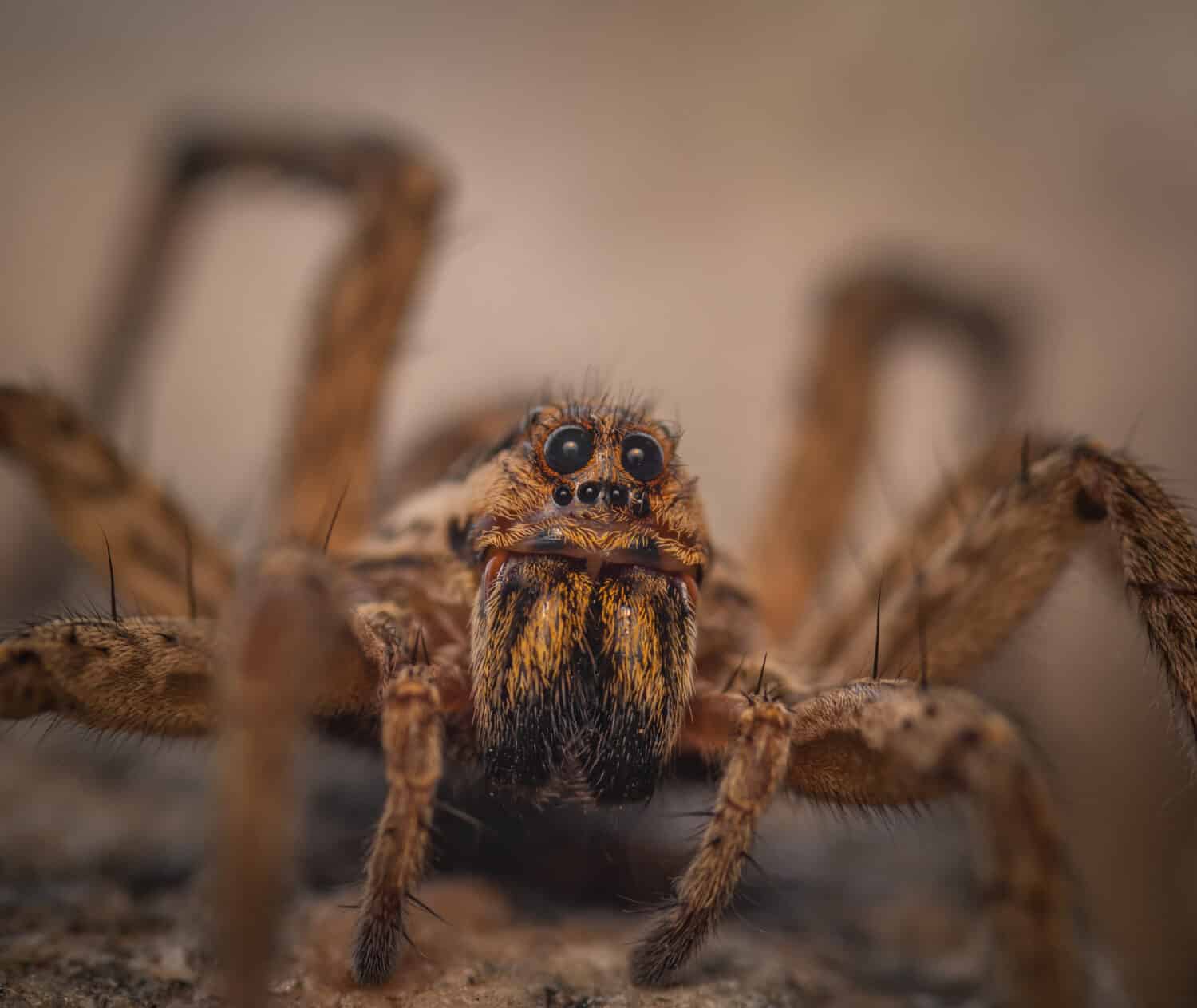Spain, the only European country bordering an African territory, is famed for its terrifying spiders. But unknown to most, the nation on the Iberian Peninsula is home to over 1,700 spider species. Some of these arachnids are harmless and unbelievably beautiful, begging you to lean over and pick them up. But others will send a chill up your spine with their weird looks and cause you nearly unbearable agony following their bite!
Interested in learning more about these hair-raising arachnids occupying different parts of Spain? We’ve written this piece with you in mind. Let’s immerse you in the fascinating spider world to help you understand these creatures and why you should steer clear of some of them at all costs.
Let’s kick off our list of Spain’s seven most terrifying spiders, with one of the most dangerous species roaming the 125 million-acre country!
1. Brown Recluse Spider
Known for its potent venom that significantly damages human skin, the brown recluse is one of Spain’s creepiest spiders. Its bite triggers mild to intense pain 2-8 hours afterward, accompanied by nausea and muscle pain. Most victims also develop an open sore about a week after the arachnid’s attack.
Although brown recluse spiders rarely kill, it’s best to avoid them. They are also commonly referred to as violin spiders or fiddleback spiders due to a distinctive dark violin-shaped marking on their cephalothorax that makes identifying them easy. Again, unlike most spider species, these arachnids have six instead of eight eyes positioned in pairs.
Their abdomens boast a uniform color (shades of brown). They are covered in short, fine hairs, giving them a velvety appearance. Other notable features include:
- Legs without spines
- Legs lack spots or stripes
- Lengths of between 6-20 mm, but others are larger
- Markings on the cephalothorax’s dorsal side
- Lifespan of 1-2 years
You can find brown recluse spiders in many places, including sheds and garages, closets, cardboard, and other dry areas. The spiders spend part of their time building asymmetrical webs (retreats), which the females use to construct egg sacs.
Is the Brown Recluse Spider Solitary?
As its name suggests, the brown recluse spider is a loner and likes to be left alone. Therefore, it shies away from human interaction and will only bite if intimidated as a way of fighting back.
Here’s a case in point. In 2001, over 2000 brown recluse spiders were found in a home in Kansas. Yet, the four people who inhabited the property were unharmed despite sharing their space with the venomous arachnids for quite a while.

Brown recluse spiders have a clean violin shape on the front part of their body.
©Miles Boyer/Shutterstock.com
2. Black Widow
The spine-chilling black widow is another terrifying spider in Spain. Undoubtedly, this arachnid is feared for a good reason. To begin with, it looks terrifying, with its round, glossy black body with distinctive red, orange, or yellow spots scattered across its abdomen to form an hourglass pattern.
Female black widows are brownish-black. Typically, they are larger than the grayish or sometimes brownish males. Notwithstanding, younger members of this venomous spider family are white and orange, though their color changes to black or brown as they mature. Adults are 3-10 mm long, with eight eyes and legs like other spiders.
Are Black Widows Dangerous?
Regretfully, the black widow’s looks aren’t the only scary thing about it—it’s a dangerous species. The female’s venom is up to 15 times more potent than a rattlesnake’s.
Even more disturbing is over 2,000 black widow bites are reported yearly in the United States, causing patients to experience symptoms such as:
- Severe pain
- Redness and swelling around the affected skin part
- Extreme abdominal rigidity and cramping
- Nausea and vomiting
- Tremors or shaking
- Excessive sweating
- Breathing difficulties
- Swollen eyelids
- General body weakness
The symptoms experienced from a black widow bite may vary depending on the location of the bite. For example, if the bite is on your upper torso, you’ll feel most of the pain in your chest. Healthcare professionals estimate that black widow spider bite symptoms develop about 15 minutes after the incident.
As of when this article was written, no fatalities have been reported following a black widow’s bite. Nevertheless, their venom could be fatal to kids, seniors, and patients. Thankfully, the spider is non-aggressive and only attacks in self-defense. Hence, staying away from it should keep you out of harm’s way.

Black widow spiders are dreaded for their venom.
©Jay Ondreicka/Shutterstock.com
3. Spanish Funnel Web Spider
In 2020, a French couple in lockdown in Grillon was stuck in a dilemma upon noticing a fierce-looking spider crawling across the hallway. Horror-stricken, they sought help to get rid of the arachnid. Still, firefighters, the police, and animal welfare groups said they couldn’t touch it with a ten-foot pole because killing it was illegal! Guess who the culprit was?
The sizeable Spanish funnel web spider is a resident of not only Spain but also France, the Netherlands, and some regions in north-western Africa. The arachnid prides itself in being the only spider the European Habitats Directive protects.
Additionally, the Spanish funnel web spider is among Europe’s most enormous spiders and is pretty hard to miss, owing to its jet-black shade. Most specimens have large flexible spinnerets on their backs and grow to nearly 2.5 inches, though most males only reach about an inch.
Spanish Funnel Web Spider Venom
All funnel-web spider bites are potentially life-threatening, though less than 20% are deadly. We recommend seeking immediate medical attention if a Spanish funnel-web spider bites you, especially with an underlying medical condition. Small children and the elderly should also see a doctor as soon as possible because their chances of death due to envenomation is high.
The Spanish funnel web spider’s bite is initially small. But it quickly transforms into a blood blister resembling the sore caused by a brown recluse’s bite. Moreover, victims experience fever and chills and may develop deep scarring requiring surgery.
Regrettably, there’s no surefire way to protect yourself or your loved ones against a Spanish funnel web spider’s bite. Yes, you can stay out of the arachnid’s way, but males are active at night and fond of exploring homes. The fact that killing the animal is unlawful and could land you in trouble with the authorities doesn’t make things any better.

The Spanish funnel web spider is among Europe’s most enormous spiders.
©James van den Broek/Shutterstock.com
4. Mediterranean Tarantula
Another frightful spider species you might stumble upon in Spain is the Mediterranean tarantula. This chunky-legged arachnid is typically large; an adult female boasts a body length just over one inch, while the male reaches about 3/4 of an inch.
As with their wolf spider relatives, Mediterranean tarantulas carry their egg sacs. Upon hatching, the spiderlings hang onto their mother’s abdomen until they’re old enough to survive independently. After the young arachnids disperse, they begin digging burrows where the females live most of their lives. On the other hand, males leave the holes occasionally to search for mates.
Male tarantulas find mates through scent. Once they find a suitable mate, they approach their burrows and tap the thin strands on the entrance so the females can emerge for mating if interested. The only way to confirm whether the process was successful is to wait until the females lay eggs.
How Often Do Mediterranean Tarantulas Bite People?
Although a Mediterranean tarantula will likely frighten you, it rarely bites. These spiders spend most of their time in their burrows, so you may have yet to come across them. Moreover, they avoid human interaction and flee when they spot large animals approaching them. But that’s not to say the arachnids won’t bite you when push comes to shove, usually to defend themselves.
So, when a tarantula feels threatened, it rakes thousands of barbed hairs from its abdomen and flicks them toward the enemy. The tiny hairs pierce the human skin, triggering a nasty rash that lasts weeks.
Consequently, the site of the bite swells; if you’re allergic to the arachnid’s venom, you’ll exhibit these symptoms:
- Low blood pressure
- Swelling of the throat and lips
- Severe pain
- Shock or collapse
- Limited blood flow to major body organs
- Swollen eyelids
Here is some good news, though—a tarantula bite is not deadly. But, of course, the experience will be unpleasant.
5. Walnut Orbweaver
Walnut orb-weaver sightings are common in Spain. The arachnids possess leathery skin with a large flattened body, but their color varies from one specimen to another. While some have a red-brown shade, others are black or gray-brown, with yellowish markings.
Again, the species’ abdomens differ as they can be smooth, spiny, and irregular-shaped. The female’s abdomen is larger than the male’s, which is slimmer.
One of the most exciting aspects of walnut orb-weavers is they’re not agile hunters or enthusiastic wanderers. Thanks to their flattened body shapes, they squeeze themselves into wall crevices or loose tree barks, where they hide for most of the day. Nonetheless, that doesn’t limit the spiders to confined spaces, as they also inhabit areas with tall grasses, weeds, and bushes.
Walnut orb-weavers are known for their large webs, mainly constructed in the evening. Mostly, the structures are round, with diameters of up to 24 inches. Even more intriguing is that once dawn arrives, the arachnids eat the webs to get moisture from the dew they collect.
How Walnut Orbweavers Hunt?
As mentioned above, orb-weavers are not talented hunters. So, their sizeable webs are handy because they help trap their prey, which includes:
Did you also know that large orb-weavers feast on small frogs and hummingbirds? Mostly, they build trap lines on their webs. When the structures trap an animal, they vibrate to let the arachnid know, allowing it to bite the prey, paralyze and wrap it in the silk for munching on later.
Are Walnut Orbweavers Dangerous?
Although some fear walnut orb-weavers, they do not threaten humans or pets. On the contrary, they’re deemed beneficial because they feed on commonplace pests like mosquitoes and beetles.
A walnut orb-weaver will only bite you if you corner it and it feels there’s no way out. The spider’s bite will be as painful as a bee sting, and you won’t experience any lasting side effects.
Again, note that while having a small population of walnut orb-weavers is recommended, too many of these spiders are a nuisance. Deter them from entering your house by sealing holes and cracks on the building’s exterior. You can also eliminate ground litter to prevent an infestation.

Walnut orb-weavers are known for their large webs, mainly constructed in the evening.
©Eifel-Details/Shutterstock.com
6. Zebra Jumping Spider
The striking zebra jumping spider may be fascinating for many, but it’s nothing short of eerie for others. As you might derive from their name, these spiders’ black-and-white color patterns may vary depending on a specimen’s habitat. For instance, zebra jumping spiders living in some of Spain’s industrially polluted areas are entirely black, enabling them to be better camouflaged against the sooty environment.
Female zebra jumping spiders are usually 0.20-0.35 inches long, making them more prominent than the males, which are 0.20-0.23 inches long. Even so, the males have larger chelicerae than their female counterparts.
Moreover, zebra jumping spiders prefer open habitats. You’ll likely see them near homes, building walls, and fences where they hunt insects and smaller spiders. Intriguingly, these arachnids also eat mosquitoes that are way larger than them. If an arthropod up to three times its body length comes along, the spider will devour that as well.
Undoubtedly, a zebra jumping spider’s acute vision gives it an edge over its prey, allowing it to measure the accurate distance to jump to catch it. In fact, the arachnid’s vision is so good that if you waggle your finger behind it, you’ll see it turning to watch you.

This zebra jumping spider exhibits the remarkable variations in color patterns that can be seen depending on their environment.
©Rabanser/Shutterstock.com
7. Radiated Wolf Spider
The radiated wolf spider is the most common wolf spider species in Spain. It occupies nearly all parts of the country, so expect to come across it in your lawn or garden, parks, forests, and even garage.
Radiated wolf spiders don’t build webs to take their prey captive. Instead, they use their incredible eyesight to spot the creatures and hunt them down, as wolves do. Moreover, these arachnids are solitary and opportunistic hunters that sometimes wait for their prey to pass through their locations so they can relentlessly pursue them.
Wolf spiders are notable for carrying their eggs with them wherever they go. The egg sac, usually a silken, round globe, remains at their spinnerets towards the end of their abdomens until the spiderlings come out. But interestingly, the loads don’t make the arachnids less talented hunters. Still, they excel at it, using their dark, mottled colors to camouflage and ambush their prey.

The radiated wolf spider is the most common wolf spider species in Spain.
©YP_Macro/Shutterstock.com
Beware of Terrifying Spiders in Spain
Of the thousands of spider species occupying different parts of Spain, these seven are some of the most frightening. But that doesn’t make them any less fascinating or valuable in the ecosystem. After all, these arachnids do a great job of reducing insect populations to keep our homes safe from the pesky critters.
However, while some terrifying spiders are harmless, others are dangerous to you and your loved ones, including pets. For example, the brown recluse and black widow have potent venom that brings about many undesirable symptoms, including swelling, vomiting, and nasty marks on the skin.
If your furry pal allergic to spiders is bitten by one, the animal will experience itchiness and minor irritation. Once you confirm the offender is a brown recluse or a black widow, take your dog to your local vet or call an emergency pet clinic for effective treatment options at home.
The photo featured at the top of this post is © Mi St/Shutterstock.com
Thank you for reading! Have some feedback for us? Contact the AZ Animals editorial team.






